Don Dines in Athens: O Skoufias, Pangrati
A hidden gem in Pangrati where...
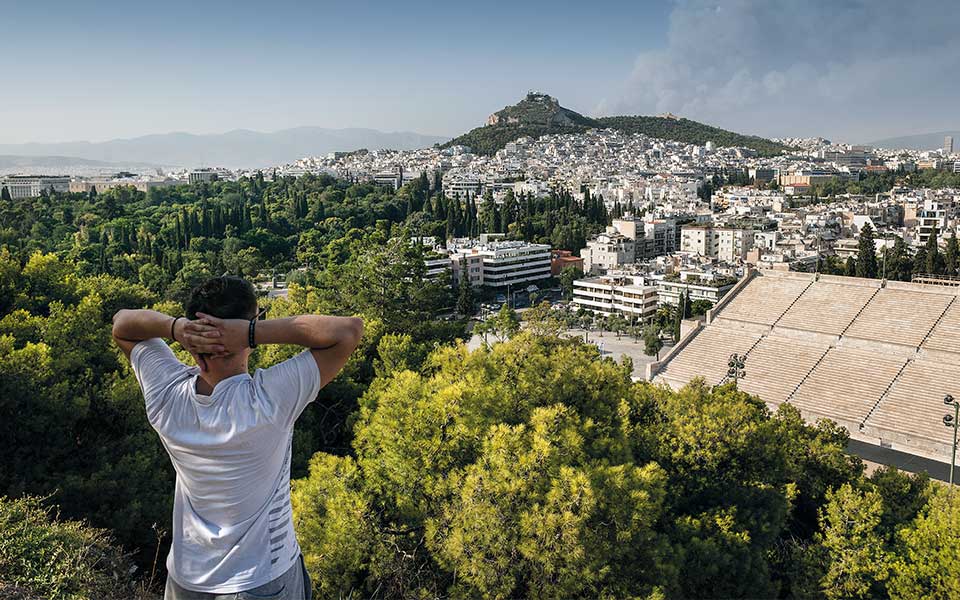
© Vangelis Zavos
For the past decade, I have clambered around the craggy tracks of Ardittos Hill, slowly discovering its half-buried secrets. An aerie far above the sirens of the city where centuries-old tortoises roam within view of the Acropolis, the verdant park here has become a neighborhood refuge during the pandemic.
As the world contracted during lockdown, I spent more time taking in the scent of pines on the breeze, listening to the chatter of magpies darting among the trees, and observing the white and purple irises that bloom one day only to wilt the next. From the top of the hill, I’ve watched the Olympic torch being handed over to the Japanese, and seen Athens Marathon runners trickling into the stadium below, elated and exhausted as they crossed the finish line to the sound of pop music blasting from loudspeakers.
One morning, while stalking the vivid blur of a Eurasian hoopoe through the woods, I heard an oddly melodious voice wafting on the breeze and followed it to the overlook above the Panathenaic Stadium, where I found tattooed Texan tenor Michael Wade Lee, dressed in shorts and a tank top, singing a Verdi aria to a selfie stick. When I asked him how on earth he’d got there, he explained that he had come to Athens to perform in “Carmen” and fell in love with a Greek musicologist.
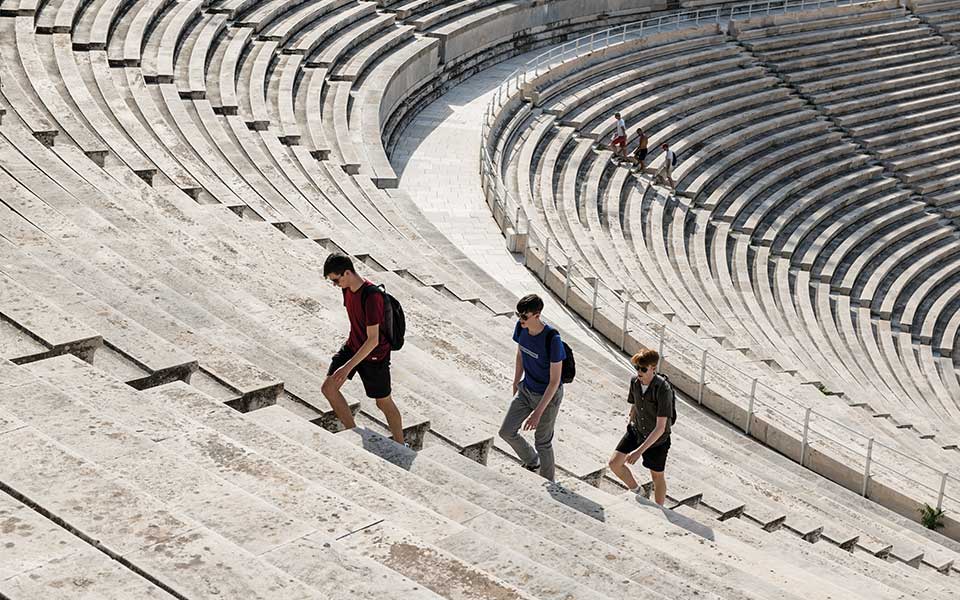
Tourists climbing to the upper tiers of the Panathenaic Stadium.
© Vangelis Zavos
At the spot where we stood, it is possible to imagine centuries compressed into a single moment, and that every past event has led, quite specifically, to the present – that essentially everything that has happened is still happening now. The Panathenaic Stadium’s pristine geometry reflects the human desire for perfection and for recording the passage of time, as if it could be carved in stone. The rumble of traffic is a distant hum; the city’s modern apartment blocks, arrayed from the sea to the curvaceous embrace of the mountains, sparkle mutely in the sunlight. Mount Lycabettus hovers on the horizon, as if the fantastic concoction of a fairytale.
Just opposite, atop Agras Hill, still lies the stone platform that supported a life-size ship on wheels, commissioned by Herodes Atticus to carry the handwoven peplos (dress) offered to Athena for the Great Panathinaia, held every four years to celebrate the goddess’ birthday. The festival featured recitations of the Iliad and Odyssey, musical competitions, boat and chariot races, and nude athletic games, all culminating in a sunrise pompé (procession) to the Acropolis, where the splendid cult statue of the patron deity was adorned. Athenian judges gave the annual Solar Oath in the name of Zeus, Apollo, and Demeter at the foot of Ardittos Hill. Back then, the sacred river Ilissos flowed by here, and the nine Muses were said to dwell on its banks. Sanctuaries dedicated to Pan and Heracles lie beneath the corner where the Athens Conservatoire is now.
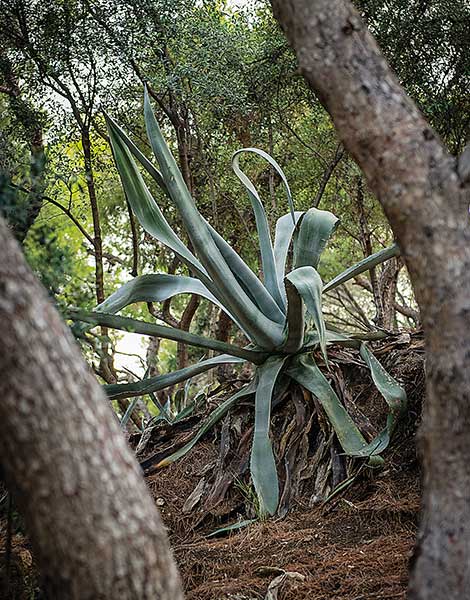
© Vangelis Zavos
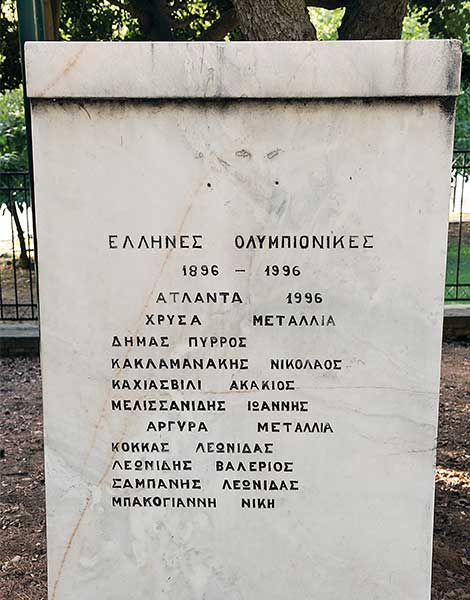
A plaque bears the names of the Greek medalists from the 1996 Atlanta Olympics.
© Vangelis Zavos
This idyllic realm of goddesses, muses, and nymphs has seen a lot of blood, sweat, and adrenalin in the last 2,500 years. Gladiators fought to the death and killed thousands of wild beasts in contests hosted by Roman Emperor Hadrian, when the stadium, more modest than today, was constructed of wood and earth. Built by Lycurgus to host the Panathenaic Games in 330 BC, it was refurbished in pristine Pentelic marble four centuries later by the millionaire from Marathon, Herodes Atticus, who also funded the building of a bridge for access across the Ilissos. The vaulted gallery used by contestants to enter the stadium, called the “diodos,” is the only element surviving from the time of Lycurgus. Also referred to as the “Hole of Fate,” this passage led into the ravine even before the stadium was built. It was associated with a mysterious oracle and was the site for the slaughter of sacrificial animals.
At the first modern Olympics in 1896, some 80,000 spectators filled the Panathenaic Stadium to watch gymnastics, weight-lifting, and wrestling competitions – and the discus throw, a component of the ancient Greek pentathlon, revived as an event on its own. American Robert Garrett took the gold medal, upsetting champions Panagiotis Paraskevopoulos and Sotirios Versis, who were hampered by attempting the awkward, idealized poses depicted in the classical diskoboloi statuary. After years of disuse in the mid-twentieth century, the stadium was opened to the public for exercise and recreation. “By the 1980s when I came back from the States, we would sit near the top to drink coffee and watch the sunset,” says George Polyzoides, whose uncle, sprinter Angelos Lambrou, won both gold and silver medals there at the Balkan Athletic Games in 1930. “The stadium was packed, and Prime Minister Eleftherios Venizelos personally awarded him the medals.”
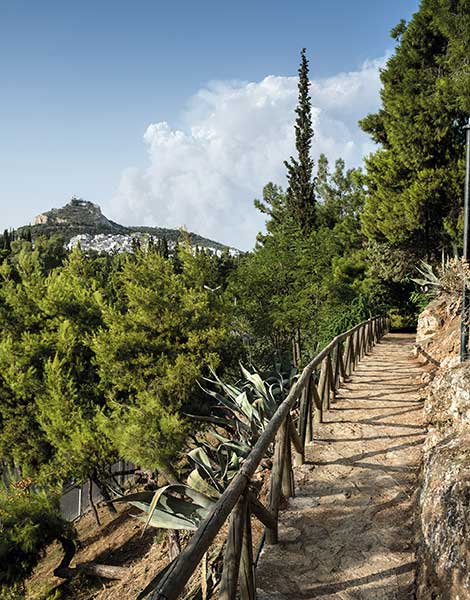
Along the way you’ll encounter pine, olive, cypress, eucalyptus, carob, almond, and pepper trees, all planted since the 19th century.
© Vangelis Zavos
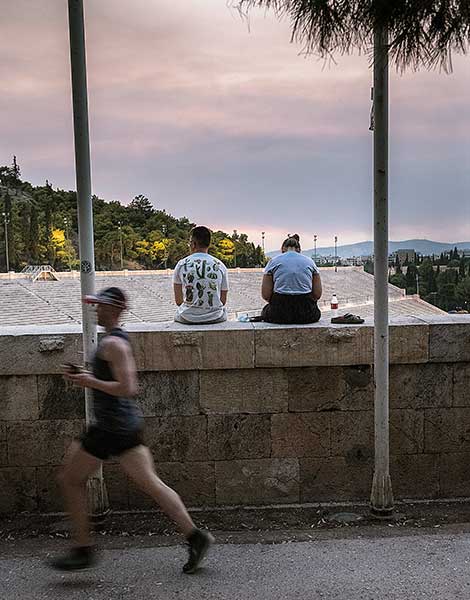
Many runners use the track around the periphery of the Panathenaic Stadium for training.
© Vangelis Zavos
Yet what is most fascinating lurks underground. For years, I had been eyeing the heavy metal doors of a mysterious stone structure hidden among leafy overgrowth, believing it to be the legendary escape tunnel from the Royal Palace, now the Parliament. It turns out that it was, in fact, a World War II bunker. One day, as I passed by, the gardeners were changing the locks and I talked my way in, meandering through the vast passages to an exit on the other side of the hill. The Ioannis Metaxas government started constructing the shelter in 1937, tunneling from an ancient cave of the nymphs, and eventually transferred artifacts from the National Archaeological Museum to the shelter for safekeeping. Later, the Germans used it as an ammunition depot, blowing up the supplies they kept there before retreating in October of 1944.
Although the bunker served briefly as a royal refuge during the reign of King Pavlos, it seems unlikely that Ardittos Hill is connected to the Parliament by a subterranean passage. Yet performance artist Mary Zygouri clearly recalls one night in 1996 when she and a friend, flashlights in hand, descended through a trap door near the park entrance. “We walked along a dark corridor ending in a big space covered in beautiful marble that looked like baths,” she says. “Everything in Athens was more open back then.” What Zygouri saw may have been the arches of the old marble bridge.
One day, following the lead of urban speleologist Dimitris Theodosopoulos, who documents his explorations in the blog “Geomythiki,” I found a heavy metal trapdoor in the ground opening into a tunnel, under Leoforos Vasileos Konstantinou, that runs along the river Ilissos. The steps down were damp with water, and a cockroach emerged from the darkness and into the sunlight. One no longer has to go down into that dank space to see what it’s like since Theodosopoulos has posted some wonderful videos, with commentary, of his own forays underground there and elsewhere. Unless they have bigger plans: In December of 1992, robbers pulled off the biggest Greek bank heist ever, using the Ilissos tunnel and digging another 28 meters into the vault of the Labor Bank, now Eurobank, at 19 Kallirois.
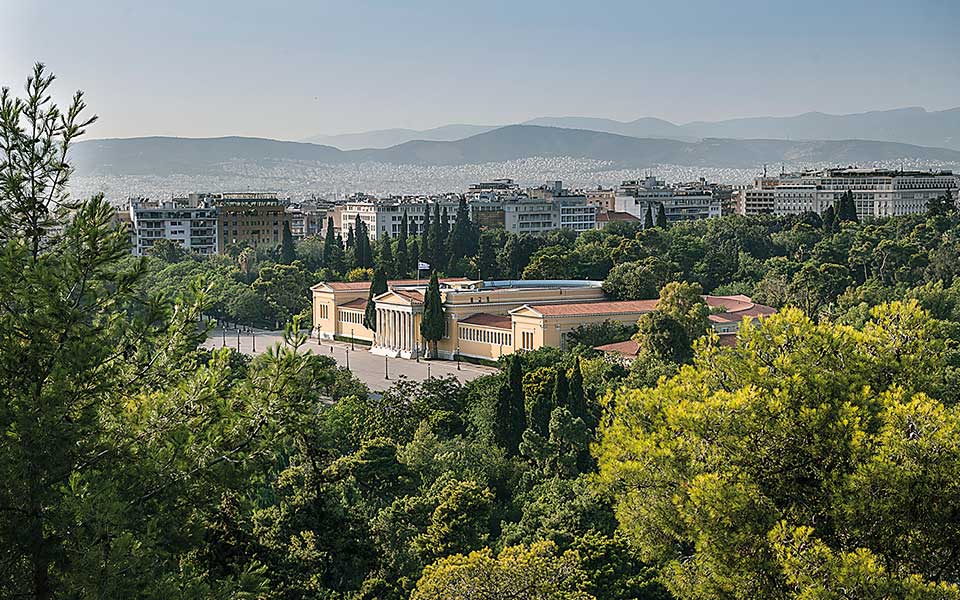
© Vangelis Zavos
Ardittos Hill also manifests the complexity and contradictions of modern Greek society: the park is officially closed, but it’s open to those in the know. The main gate remains locked because the Archaeological Department has deemed the pathways unsafe for visitors, and an application has been made by the Zappeion Office for ESPA funds to make them suitable for the public. “To open a place, two things have to happen. You have to do the work to make it safe to walk on the pathways, which costs a lot of money and has to be approved by the archaeologists and the forestry department… Then you need people at the entrances…to monitor the park,” says Dimitris Nikolaou, head of landscaping for the Zappeion and Ardittos Hill.
However, an entrance at the back of the stadium, managed by the Olympic Committee, is open daily to provide access to the running track, and it makes the rest of the park accessible as well. And even when that entrance is closed, as it was during lockdown, there’s a secret way to get in. “Maybe someday the park will be open to all the people to get in and ruin it,” he adds. “Honestly, I’m ambivalent about that.” Yet the biggest concern, Nikolaou says, is the lack of access roads for fire trucks.
Both Nikolaou and Altin Hatija, the gardener who tends Ardittos Hill, are passionate about the landscape and its creatures. When I described the rugged paths in the park as being comprised of dirt and broken concrete, Nikolaou asked, “Why do you Americans call it dirt? It is soil, it is earth!” In spring, the native tortoises, known to live for centuries, roam throughout the area. This year Hatija counted 100 newborns. One of the oldest tortoises can be identified by a big crack in its shell. Stone pools have been built for bats to swoop down to drink the water –and hopefully prey upon the destructive pine processionary caterpillars, whose hairs are toxic to the touch.
Aside from the pine trees in which the caterpillars nest, there are olive, cypress, eucalyptus, carob, almond, and pepper trees, all planted since the late nineteenth century; grazing goats had nearly cleared the hill of vegetation prior to that. Not long ago, Hatija planted oak seedlings procured from Parnitha in an attempt to restore a species characteristic of the vegetation that grew here in ancient times, but only a few have survived, due to lack of rain. Scattered all over the hill are giant agave, called “immortals” in Greek, that produce very tall floral stalks just before dying.
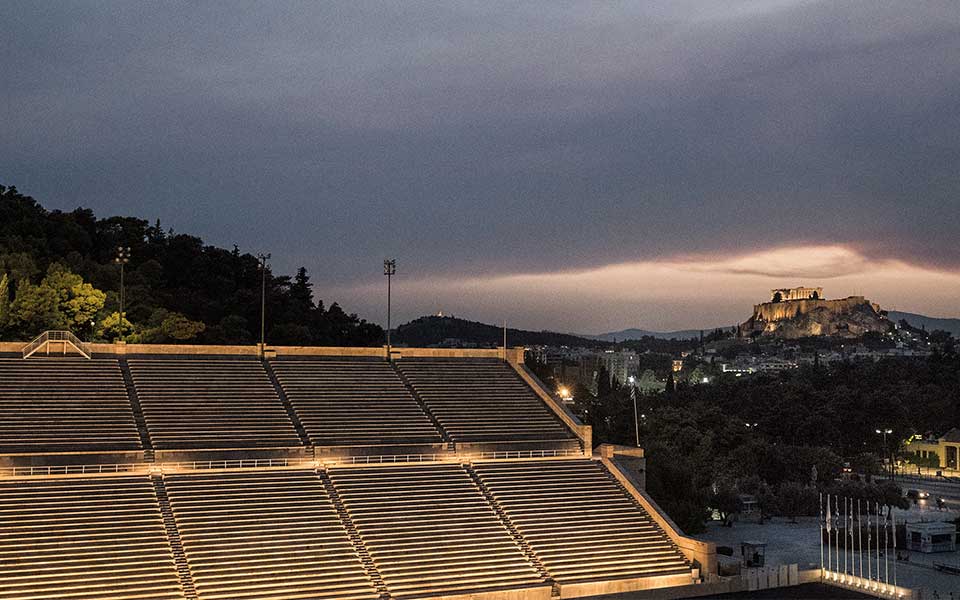
© Vangelis Zavos
A nexus of rebirth, the hill is our spiritual sanctuary, and the gardeners are its priests. “I lived here for years before going inside; it’s like entering another dimension,” dog owner Rea Kalavasis says. “There is a special energy that makes everyone feel in harmony.”
On the hilltop behind us were remnants of a temple to Tyche, the goddess of Fortune, where pagans still come to burn incense and leave offerings of roses and pomegranates. Or are they the seeds eaten by Persephone, obliging her yearly return to the underworld? It is said that the Lesser Eleusinian Mysteries – the sacrifice of a piglet to Demeter and Persephone, followed by purification in the Ilissos – were performed here during the Anthesteria, a festival devoted to Dionysus during which vintage wine was uncorked and spirits of the dead mingled among the revelers. To the casual observer, these temple pediments are mere slabs of rock, and I often rest there in the shade after playing fetch with my dog, Lucky.
The perennial presence of the Parthenon in the near distance, along with the unruly flora and fauna of the park, is a reminder of the eternal return. The dog leaps and scurries like a wild thing, disappearing into a patchwork of sun and shade, oblivious to the ruins of fallen empires – all that matters is the lush nowness of the verdant hill and its meandering paths leading to the same places, transformed each day by different scents and perspectives. Sometimes it feels as if the creatures of the park are psychopomps, beings sent to guide us to the afterlife, transporting our souls to another plane of existence. A modern marble fountain stripped of its metal spout is an elegant expression of Jorge Luis Borges’s “Elegy for a Park”: “The stopped clock, the tangled honeysuckle, the arbor, the frivolous statues, the other side of evening, the trills, the veranda and the idle fountain are things of the past. Of the past? If there’s no beginning, no ending, and if what awaits us is an endless sum of white days and black nights, we are already the past we become. We are time, the indivisible river…”
A hidden gem in Pangrati where...
We join archaeologist and MONUMENTA coordinator...
Souvlaki joints started appearing in earnest...
A stroll down one of the...